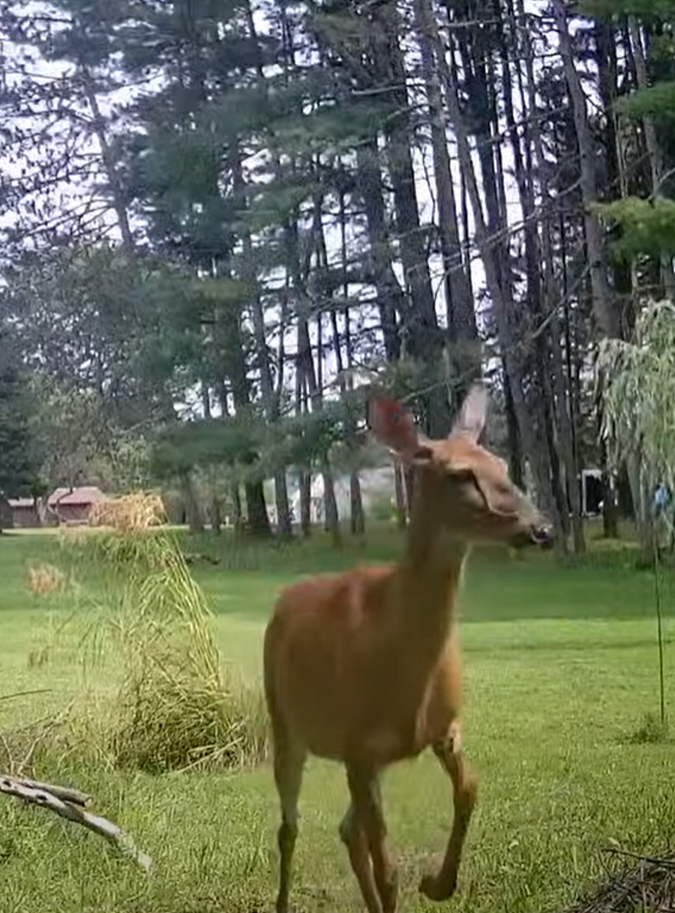White Tailed Deer
The first part of the common name refers to the 6-11 inches, bushy tail which the animal erects when disturbed, displaying the white hairs of the outer edge and under surface. Long, slender legs – each bearing two narrow, pointed hooves that support the weight – prominent ears, and in males, bony antlers (developed annually from pedicals of frontal bones in April-May and usually shed by February) are other characteristics.
Molting produces marked seasonal changes in coat color which in summer is reddish brown, the hairs short, sparse, and wiry. The winter pelt is grayish brown, the hairs long, dense, and, because each hair contains insulating air spaces, brittle.
In all seasons, the lower parts of the body, inner areas of the legs and ears, eye rings, a narrow band across the muzzle, and part of the throat are white. The nose, a small area on the chin, and the upper surface of the tail are black. Adults are about 71 inches in total length, and 39 in in shoulder height.
The average weight of an adult male is 203 lb (maximum, 405 lb). The average weight of a female is about 155 lb (maximum, 218 lb).
White-tailed deer are primarily crepuscular (active at twilight) in the spring, but are active during the hours of daylight as well in the summer, including midday.
By late autumn at the onset of the rut and throughout this period, bouts of activity occur equally at all times during a 24-hour period. Winter activity, mainly foraging, is more likely in late afternoon.
Storms at any time of year may reduce activity, with slightly more movement taking place before and after inclement weather.
General levels of activity increase with day length in late winter and spring, decline in summer and then peak again in late autumn. Deer stand quietly or bed down in cover when inactive.


